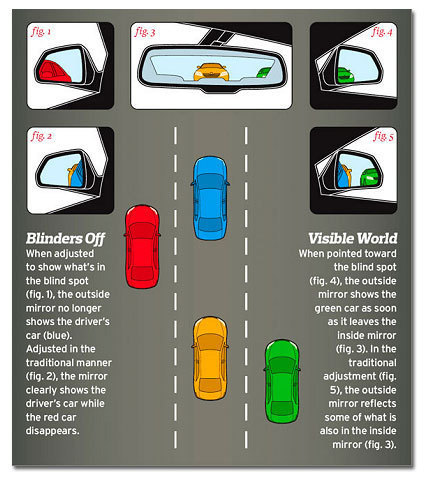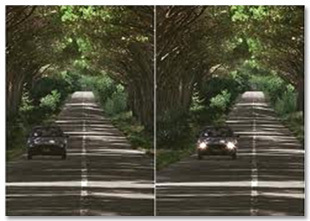If you hear noises that seem out of place in your vehicle, please don't ignore them. Not paying attention may end up costing you more if you let parts fail. Contact us to book a service appointment today and make sure that click, bang, hiss, wrrrrr, isn't something more serious!
Read More
5 Things That Will Save You From a Vehicle Emergency
Driving is a necessity for a lot of people in the world today. Whether it be going to work, school or anywhere in between, you can see plenty of vehicles on the roads getting to where they need to be.
As more people drive to their destination, the more dangerous it can be on the roadways. Here are 5 quick tips that can keep you and your family safe on the roads, no matter where you go!
Checking Your Blind Spots
Checking your blind spot may seem like a no-brainer, but you’d be surprised at how many accidents a year are related to drivers not checking their blind spot! The first thing every driver must do is adjust their mirrors. When positioned correctly, side mirrors help eliminate the blind spot in your vehicle. Though most modern vehicles have blind spot monitors, it is always safer to check your blind spot yourself.
Don’t Brake During a Blow Out
If you experience one of your tires blowing out while you are traveling, DO NOT slam on the brakes! Although your first instinct might be to stop your vehicle, doing this may cause your car to fishtail or even flip over. What you should do instead is apply pressure to the gas pedal until the vehicle stabilizes and then guide your car to a safe zone with your foot off the gas and brake pedals. The drag from your tire blowing out will stop the vehicle eventually. Afterward you can change the tire or call for help.
Always Carry a Safety Kit
It is important to always keep a safety kit in your car. Your car safety kit should have some of the following:
- Collapsable shovel
- Traction aid (Sand, salt, kitty litter)
- Jumper cables
- Flashlight & extra batteries
- Fire extinguisher
- Road flares
- Blankets
- First Aid kit
- Water & non-perishable food
- Battery powered cell phone charger (Charged, of course!)
- Portable battery charger
Having a safety kit in your vehicle can help during times of car trouble. Including an old cell phone in your kit can help in emergencies, as phones can still connect to emergency services without being connected to an active phone contract. There are many things you can put in your safety kit, and it is completely customizable for you.
Drift out, Drift in, unless There’s Danger
We all drift out of our lanes from time to time. We drift because we lose focus, or other things need attention (or get attention, like changing songs on an iPod).
If you drift, you don’t need to take a violent sudden action to correct it, unless danger is looming. Assuming no one is near enough to be affected, you can simply drift back into your lane and continue on your way.
There’s no need for drama most of the time.
Regular Maintenance!
We know this last one is obvious, but seriously, when is the last time you actually checked if the following are in good working order and have been kept up on maintenance? How many are you ignoring?
1. The Oil
2. The Tire Pressure
3. The Brakes
4. The Power Steering Fluid
5. Wheel Alignment
6. The Antifreeze or Coolant
7. The Tire Treads
8. The Air Filter
9. The Transmission Fluid
10. The Lights – All of Them
Any of these 10 crucial elements of your vehicle can cause a serious problem in a bad situation. We are all guilty of ignoring maintenance but as your safety is involved, as well as a major investment in your vehicle, we can't emphasize enough how important it is to keep up on these things. You can do much of this yourself, or bring your vehicle in to us at Dale Adams Automotive and we will always give you exceptional quality of service at a fair price.
Here is a link to better explanations of these important items.
BONUS TIP: EXTREME SITUATION
How to Escape from a Sinking Car
This will probably never happen to you. Or to anyone you know.
But knowing the steps to get out of a sinking car may save your own life, as well as those of your passengers. Think it through, while sitting in your car, and remember your plan, and you’ll be in good shape. Here are the steps to take when your car ends up in the water.
- Keep your cool. Panic will put you in more danger.
- Hold on to the steering wheel at the 9 and 3 positions (or even 8 and 4) to avoid injury if the airbags inflate.
- As soon as the car is in the water, undo your seatbelt–and help small children do the same.
- Do not worry about making the cell phone call.
- Open the window–or a window–as quickly as possible. Electrical systems should work for a short period after the car lands in the water. Don’t worry yet about the doors–that could cause a quick sink rather than a slow one.
- If you can’t open the window, use a hammer or window breaking tool you have stowed conveniently to smash the windows.
- Get air in your lungs and get out of the window.
- If the car is filling with water, know that you will not be able to open the door until the water pressure is equal inside and out. You will still have an air pocket up near the roof of the car.
- Help children out first then follow them to the surface.
As with any safety plan, it’s important to have a plan–know what you will do. You will only need to think about it once or twice in your driving career, but you may end up being thankful you did.
Stay Safe
Being a safe driver is paramount to keeping you and everyone around you safe. Always be aware of your surroundings and never make any rash decisions. Plan ahead for the moderate cost of maintaining a vehicle and make time to check your vehicle at least every 3 months. If you have questions or concerns we are only a call or email away.
Dale and the team.
7 Driving Techniques You Should Learn from a Race Car Driver & Why

Original Post by Auto Loan Solutions
 Driving your conventional 4-door sedan may not seem to have anything in common with the experience of driving a $10 – $15 million Formula 1 (F1) car. The former is for average folk, while the latter is for the exceptionally gifted drivers out there, and it’s fair to assume all racing skills are only useful for race tracks. But they’re not worlds apart. In fact, there are a number of driving techniques you can learn from a race car driver, that will help make your daily drive to work or those summer road trips better. Not only are they good for improved performance, they’re actually great for your safety as well.
Driving your conventional 4-door sedan may not seem to have anything in common with the experience of driving a $10 – $15 million Formula 1 (F1) car. The former is for average folk, while the latter is for the exceptionally gifted drivers out there, and it’s fair to assume all racing skills are only useful for race tracks. But they’re not worlds apart. In fact, there are a number of driving techniques you can learn from a race car driver, that will help make your daily drive to work or those summer road trips better. Not only are they good for improved performance, they’re actually great for your safety as well.
- Use your eyes like a camera
Let’s start with your eyes and brain here. On the track, a race car driver uses his or her eyes like a film camera, capturing different “shots”, primarily focusing on what’s far ahead of them or where they want to go. They’re not fixed just on what’s directly in front of them.
This is an important skill for you as a driver. Too many people fix their eyes on the car ahead of them, rather than the flow of traffic in the distance. For a race car driver, doing so means putting yourself in a bad position. For you, that could mean ending up in a serious or fatal accident. Keep this in mind: your brain needs time to process the road conditions ahead, and you can only do so if you have time to see what’s taking place beforehand. That calls for looking into the distance, not the foreground.
- Brake “left-footedly”
Like the left hand, you have individuals who use their left foot more than their right. Some of the best race car drivers are in this category, preferring to brake with their left foot. Braking with the left significantly reduces the time it takes to slow down, which of course, is vital at times when driving. The reason for this stems from the fact that your left foot is closer to the brake.
 Drivers of race cars need to often decelerate from speeds of 250km/h to 80km/h around sharp corners, so quick braking is essential. For the average citizen, quick braking matters not for the finesse of turning around bends (although it is impressive), but to avoid losing control of your car or prevent a rear-end collision. A second can mean the difference between escape or impact. Braking with the right usually wastes that precious fraction of time, which often translates to a distance of 30 – 50 feet travelled. Left-foot braking, however, cuts that time down by several seconds. In turn, you stop much faster than you would with traditional braking.
Drivers of race cars need to often decelerate from speeds of 250km/h to 80km/h around sharp corners, so quick braking is essential. For the average citizen, quick braking matters not for the finesse of turning around bends (although it is impressive), but to avoid losing control of your car or prevent a rear-end collision. A second can mean the difference between escape or impact. Braking with the right usually wastes that precious fraction of time, which often translates to a distance of 30 – 50 feet travelled. Left-foot braking, however, cuts that time down by several seconds. In turn, you stop much faster than you would with traditional braking.
- One move at a time
For some odd reason, a lot of drivers think the busier they are behind the wheel, the better their driving skills are. They believe the constant steering, braking, accelerating and shifting of gears makes them more skilled since they’re able to multitask so well. They are mistaken. Watch a race one day – the occasional dash cam footage will show a level of stillness you may have not noticed before. The driver is usually focused on turning the wheel.
They maintain this focus to avoid losing control of their cars. Anytime they accelerate, brake or steer, there is the potential of breaking traction, which isn’t always desirable. A loss of traction is something you certainly don’t want as a driver, especially when the roads are slippery due to rain or ice. Unless you have refined chops as a racer yourself, you’ll want to maintain a smooth and steady drive by focusing on one thing at a time, without steering or braking/accelerating too hard.
- Grip the wheel…and pull
Here’s a strange tip: don’t just grip the wheel, pull it. Race car drivers practice this weird little hack to gain superior control of their steering. So if the driver has to turn left, for example, they’ll pull down with their left hand (or if making a right, they’ll push down with the right) as if this allows for more dexterity and as a result, more control (although some recommend pulling down and pushing up with one hand).
For both race car drivers and yourself, more dexterity and control means a better driving experience. In terms of safety, you can weave around obstacles such as potholes, or distracted drivers instantaneously. Also, sharp turns that require plenty of stability won’t faze you.
- Regaining control after sliding
Remember too, that racing isn’t all about speed, and safety plays a big part in the sport as well. That’s why drivers practice how to escape a slide at length since it can actually happen on a race track. Of course, there’s a difference between sliding and drifting (which is common in some motorsport such as rally racing). Drifting is controlled – sliding is not and since it puts the racer in danger, they must put their eyes where they want the car to stop, turn the wheel in that direction and maintain that position while slowly braking.
For both the race car driver and the average joe, doing so can prevent a collision with another vehicle. However, this technique is even more paramount for the average driver, because other motorists most likely won’t have the skills of a professional racer who can quickly dodge an out-of-control car.
- Driving in wet/slippery conditions
 Racing in the rain is no doubt riskier than racing on dry pavement. So the race car driver has to keep his vehicle balanced, in order to not spin out on the slippery surface. In motorsports, there’s a “racing line”, which is the path they should follow to complete a course as quickly as possible. However, in rainy weather, racers can’t follow these lines completely, and they’ll have to focus more on finding patches of road that offer the most grip.
Racing in the rain is no doubt riskier than racing on dry pavement. So the race car driver has to keep his vehicle balanced, in order to not spin out on the slippery surface. In motorsports, there’s a “racing line”, which is the path they should follow to complete a course as quickly as possible. However, in rainy weather, racers can’t follow these lines completely, and they’ll have to focus more on finding patches of road that offer the most grip.
Of course, rain can be dangerous both to the racers and regular drivers. But how can you abandon your “racing lines” to find your grip? Well apart from equipping your vehicle with the appropriate tires, you should take your attention off doing the speed limit and trying to beat the amber light. Rather, focus on early braking, maintaining your distance with other cars, and looking out for slick patches of road that may cause skids. The goal here isn’t to get to your point B faster, but to get there safely.
- Surviving a tire blowout
Tire blowouts occur on race tracks too. It can be devastating for the driver since it may cost them the chance of a winning title, like what happened to F1 racer Sebastian Vettel last fall. Nevertheless, drivers remain calm and keep their car moving straight until they’re moving slow enough to drive off to the pit stop. They don’t stomp on the brake or try to steer off the road, as this could cause their car to spin out of control, smashing into other vehicles.
This technique can be hard to pull off because it goes against everything your mind is telling you in such a frightening situation. But it can save lives. Again, this driving technique is probably more urgent for the average citizen, because a lot of drivers out there don’t have the reflexes, poise and muscle memory to stay away from you if you’re out of control. So remaining in a straight path will keep you and all those around you safe.
Learning from the masters
There are a ton of racing legends out there who have their own tips on how to drive a car. Of course, classic heroes like Mario Andretti or modern phenoms such Lewis Hamilton have their own tricks which they may not share with you. However, they all follow some basic driving techniques that you can also use. And they’re not only useful for performance, but your safety as well. So the next time you see something about a race car driver, don’t dismiss them as overpaid young men who get to sit all day – their skillset has relevance for you as well.
Talk to us here at Dale Adams about all your performance vehicle needs.

6 Little-Known Driving Tips That Could Save Your Life
Original story at Cracked.com by Ajay Kumar, November 20, 2012
Driving a car, or getting run over by one, is still one of the most popular ways to get killed in the modern world. Despite the fact that cars are safer than ever, they are still driven by human beings who, let's face it, often have trouble retaining even the minimal techniques and rules required to operate a vehicle.
But if you're reading this, hopefully it means that you are intent on doing what it takes to survive in a world full of such drivers by being just a little more careful. So for you, here are some advanced tips that everyone should know, even if most people don't ...
6 Don't Have Your Car Visible Anywhere in Your Mirrors

Getty
This is one of those things that takes next to zero effort to do right, but that almost everyone does wrong.
You hopefully already know that the "blind spot" is the name for the area on either side of a car that is invisible to wing mirrors. It's such a frequent cause of accidents that higher-end car models have adopted fancy radar or camera systems capable of detecting other vehicles in your blind spots and delivering the information to you in furiously urgent beep-screams as you swerve in terror and/or crash anyway.
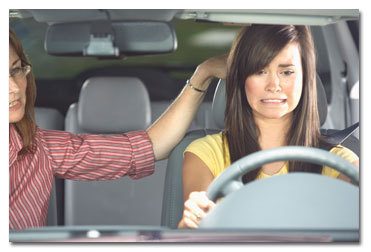
Getty
Just gritting your teeth and flooring it isn't the answer.
However, the technology isn't the problem -- the necessary equipment to eliminate blind spots was around back when Henry Ford was still producing cars and anti-Semitic newsletters. All you need are your car's wing mirrors -- which most people have adjusted incorrectly.
You see, blind spots can be put into full view of your side mirrors, provided that these mirrors are adjusted to contain no part of your own car. Just angle them away from you until the point where your car is no longer visible in either one, and leave them there. That way, there's no overlap between them and the rearview mirror, and any car that's passing you on either side will remain in at least one of your mirrors until it enters your field of vision.
Admittedly, this seems less like a "tip" and more like "the most obvious piece of instruction of all time," but nobody freaking does it. Manufacturers have to let you adjust the mirrors (due to things like differences in driver height), and most people simply don't know how to do it. That's why those same engineers are spending millions on technology meant to eliminate blind spots -- they have simply failed to teach people not to point their goddamned mirrors at the sides of the vehicle they're attached to.
5 Pay More Attention to Traffic Than Road Signs

Getty
If you saw someone blow past a yield sign into traffic and vanish in an explosion of steel and glass not unlike one of the Iron Giant's volcanic diarrheas, you'd be tempted to blame the crash on the driver who ignored the road sign.
But what if the yield sign wasn't there, like those intersections where there's nothing but an esoteric flashing yellow light and everyone stops and stares at each other? There would probably still be the odd person who flies through, but average drivers would become extremely cautious as a result of having no clear instruction of what to do. They would instead just intuit their next move based on the traffic around them, which is kind of the point of stoplights and road signs to begin with -- to force you to stop and look.
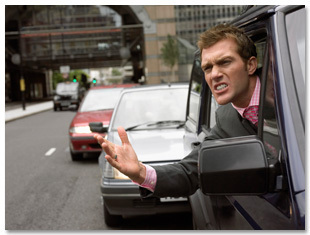
Getty
"What the hell does 'yield' mean, anyway?!"
In other words, you may be better off without the signs.
There are experts who believe that the overabundance of signs and signals just make you complacent, because you're fixated on blindly following instructions printed on reflective metal rather than not killing your fellow drivers. And we've all seen it happen -- drivers with a green light will plow through an intersection and T-bone another car that was clearly in their path, simply because the pretty colored light told them they had the right of way. And think about how people will lose their freaking minds if traffic and/or weather conditions have them driving slower than the posted speed limit, routinely causing accidents by trying to weave their way back up to maximum warp, even though the speed limit is literally just a number on a sign that takes absolutely nothing into consideration beyond what a few civil engineers came up with on a calculator 30 years ago.
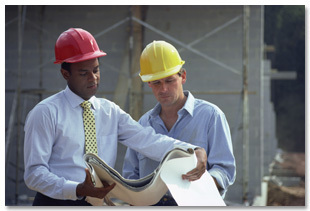
Getty
"15 mph is fast enough for anyone. Those buggy drivers are out of control."
The Dutch city of Drachten decided to test out the theory by replacing 20 four-way intersections with 20 roundabouts free of any road signage, and the results were surprisingly nothing like The Cannonball Run. One intersection that typically killed two to four people every year saw no injuries for the next six years, and another intersection went from 36 accidents in the previous four years to just two in two years. All this just from putting more responsibility into the hands of drivers and forcing them to interact with each other in the absence of indifferent commands from stoplights and signs (although it could also be related to the fact that nobody in the Netherlands has a The Fast and the Furious: Tokyo Drift poster on their bedroom wall).
Since the success in Drachten, a number of other cities have tried out similar concepts, most notably London, whose recently debuted Exhibition Road looks like the guy in charge of painting lines on the streets was tripping balls that day.
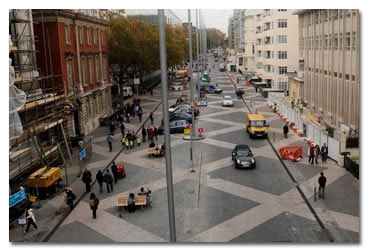
We're still not clear on how this is supposed to help, but there you are.
We're not saying that you should ignore stoplights and road signs, but that you shouldn't rely on them to make every decision for you. Just because you had the right of way at an intersection won't make you any less dead if you pull in front of an 18 wheeler, and refusing to slow down for pedestrians because they aren't crossing in a designated crosswalk won't put you any less in jail if you chop them in half with your Daewoo.
Or maybe we should just put it this way: Obey the signs, but assume that nobody else is doing so.
4 Listening to Techno Makes Your Driving Worse

Getty
Every car comes with a stereo and speakers, but you don't find much in driving manuals about what you should or shouldn't do with them. So it's easy to assume that it's safe to bump some jams while driving, as long as you're focused on the road and not constantly messing with the knobs or looking at yourself in the rearview mirror while you're singing. But research shows that your tunes are probably making you a worse driver, even if you just like a little ambient music in your Prelude.
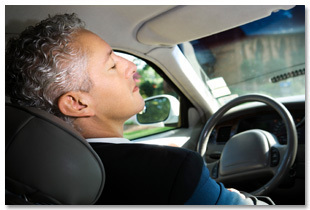
Getty
"These whale songs are so ... *yawn* ... so ..."
An Israeli study connected test subjects to heart monitors and put them through a driving simulator while they listened to music of varying tempos. A no-music control group experienced significant heart rate fluctuation while driving -- that is, their heart sped up when things got exciting, like if a moose turned up in the street or something. But those who were listening to any type of music saw their heart rate stay level (except during the Les Miserables soundtrack, when their heart rates soared with bittersweet triumph).
At first glance, this suggests that the drivers who were listening to music were more calm, and thus more careful drivers than the control group. But it was the opposite -- the music group Dukes of Hazzarded their way through the virtual driving course like they were running moonshine for a one-legged banjo player. They were calm (maybe), but only because they were less focused on driving than the control group -- they were placated by the music.
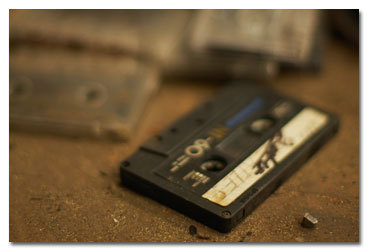
Getty
Which is why your creepy uncle always told you that mood music was the key.
The study also showed that drivers who were listening to higher-tempo music (between 120 and 140 beats per minute, the speed of most dance and techno music) were twice as likely to blast through red lights and had twice as many accidents as those who were listening to slower music or the deafening echo of their own thoughts. Drivers who were listening to dubstep were 84 percent more likely to believe that there was a Transformer behind them trying to mate with their car.
3 Always Have Your Headlights On

Getty
According to a recent study, you can reduce your risk of being involved in an accident by up to 32 percent simply by driving with your headlights on at all times. This seems like common sense -- obviously something that is lit up is going to be more visible, regardless of the time of day. And as long as other cars are driven by tired, distracted human beings, greater visibility equals less chance of having a hood ornament embedded in your skull. Yet almost nobody drives with their lights on during the day (and cars with automatic lights won't flick on until the sun goes down).
"How will I sneak up on unsuspecting motorists now?"
Other drivers are simply less likely to pull out in front of you if they can instantly see the glare of your headlights in a quick glance (unless they were planning to cut you off, in which case they are shitheads and the accident was unavoidable). This also counts for pedestrians and cyclists, who statistically will sometimes miss their own oncoming death unless there are bright lights attached to it.
In countries like Canada, Sweden and Finland, all new cars are required to have automatic running lights that stay on at all times, and you can get them on some new car models in the U.S. But the majority of drivers still have dusty old manual headlights, so if you're one of those people, you'll just have to dig deep and flick your lights on and off every time you drive (we know, we know -- it hardly seems worth all the effort, but trust us, you'll be much safer).
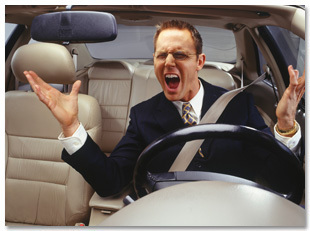
Getty
"LIGHTS?! Are you crazy? I'm already late for work!"
2 Your Parking Break Stops Working if You Don't Use It Regularly

Getty
Of all the aspects of driving, parking should be the most straightforward. Basically, you take the keys out of the ignition and get out of the car (hopefully after putting the car in park, hopefully not in the middle of an elementary school).
Oh, and if you're on an incline, maybe pull the parking brake. If you don't, you might end up like this guy, which is simultaneously a worst- and best-case scenario.
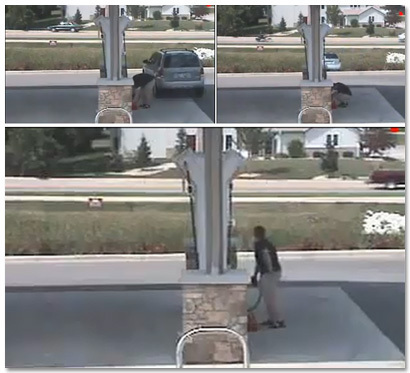
Inexplicably, the next shot is him bending back down to continue filling the gas tank.
But here's something most people don't know: You should probably put on the parking brake, regardless of whether you've stopped on the taxiway of a Delta terminal or at the summit of the Grinch's mountain, just to keep it in good working order.
You see, the parking brake is also commonly called the emergency brake, and as the name suggests, it can be used in a situation when your brakes fail or have been otherwise disabled by enemy agents. It overrides the hydraulic mechanism normally used to control the brakes and stops you with cables, which are demonstrably better than hydraulics because hydraulics never cut anyone in half in a Die Hard movie.
But the problem with steel cables is that they often rust and corrode, particularly after long periods of disuse. The way parking brake cables are designed, if you don't engage the brake every so often, the corrosion builds up and will cause it to fall apart like the bad guy in Indiana Jones and the Last Crusade.

Getty
You'll want to skid out regularly, and with a gun so you feel extra cool.
So if you bought your car back when the cast members of Harry Potter were still children and have never used the parking brake, and then suddenly throw it on to bail yourself out of an honest-to-God emergency, such as barreling down the switchback of Lombard Street toward a rampaging atomic monster bursting out of San Francisco Bay, the cables will probably just snap under the strain and result in a headstone that will seriously confuse future archaeologists. Unless the monster wasn't just a one-time thing.
1 Don't Brake During a Blowout

Getty
The knee-jerk reaction to pretty much all panicky driving moments is to stand on the brakes like goblins are trying to crawl out of them, and in most cases this is absolutely correct.
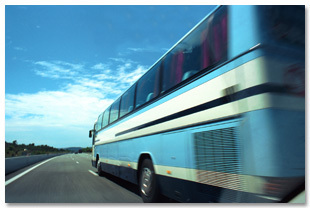
Getty
Unless you're in a Speed-like scenario.
That being said, imagine you're cruising down the highway at about 65 mph when all of a sudden you hear your rear tire explode like you just ran over a tiny landmine. As you fire s**t out of your pant leg like a muddy trumpet, you can feel that the car is about to go out of control. If you follow your instincts, you'll probably hit the brakes, but in this case your instincts have tragically failed you.
See, if you brake during a blowout, you're almost certain to fishtail (and maybe flip), possibly into another fast-moving car or the median (or both). This is especially true if your rear tire has blown out, which is more likely than a front tire blowout (front tires wear out more quickly, but people see that and replace them, while leaving the rear tires in place for years and years as part of their plan to just drive the car until it slowly disintegrates).
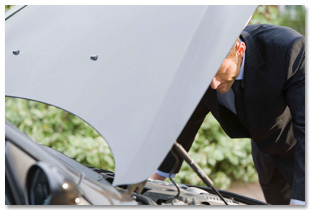
Getty
"Still here, eh? Well played, car."
So in the event of a blowout, you must do the very thing that makes the least sense: hit the gas. But don't drop an elbow on it like Macho Man Randy Savage; just squeeze it firmly for a couple of seconds to regain control, keeping the car as straight as possible. A completely blown or otherwise flat tire drags on the ground like an anchor -- if you slam on the brakes, the anchor catches at 65 mph or however fast you're going, and you're screwed. Ditto if you smash the gas pedal -- picture a cigarette boat tossing its anchor down at top speed. Give the car just enough speed to stay in control and then gently let your foot off the gas, turning into the blown tire (if you steer the opposite direction, the anchor catches). The tire that betrayed you will eventually bring the car to a stop on its own, and then you can get out and throw your pants into the woods.


